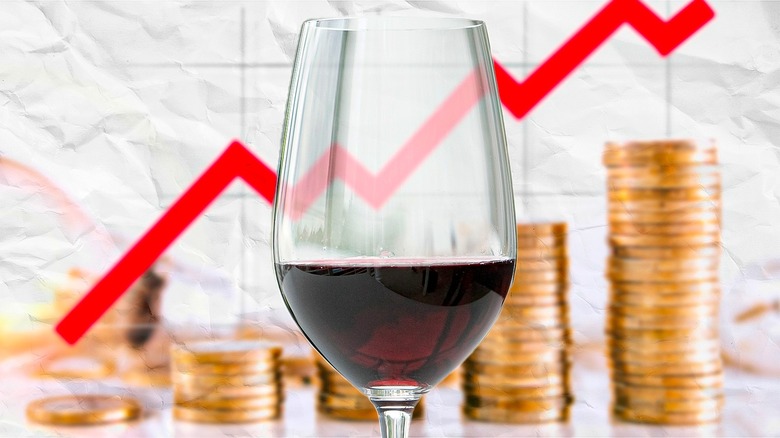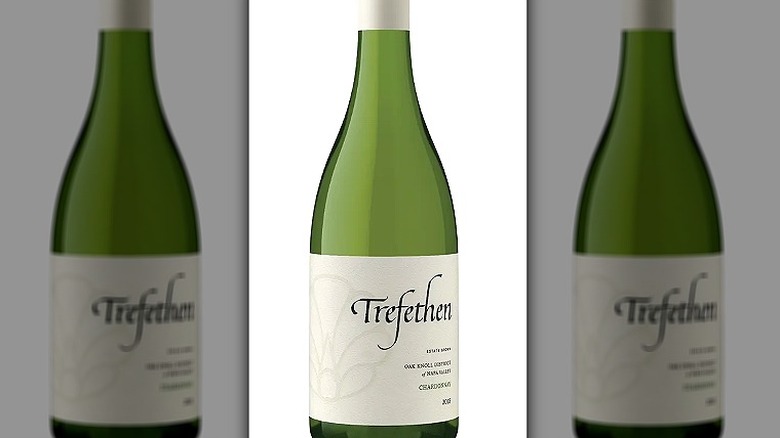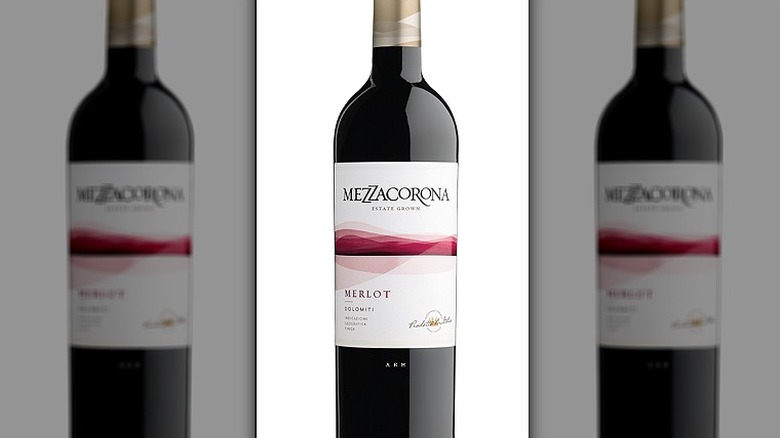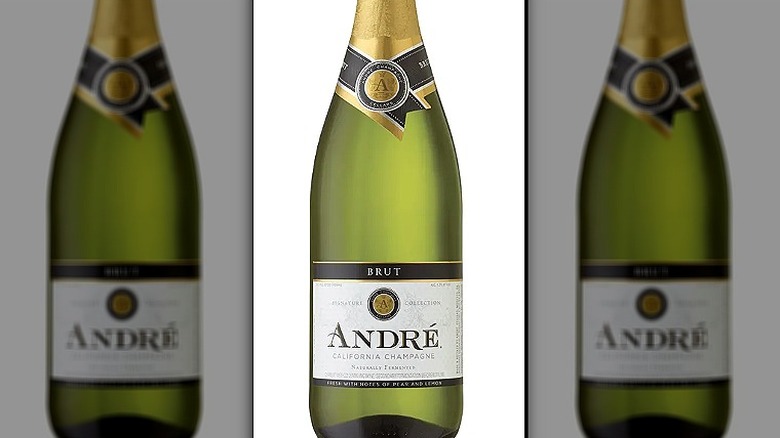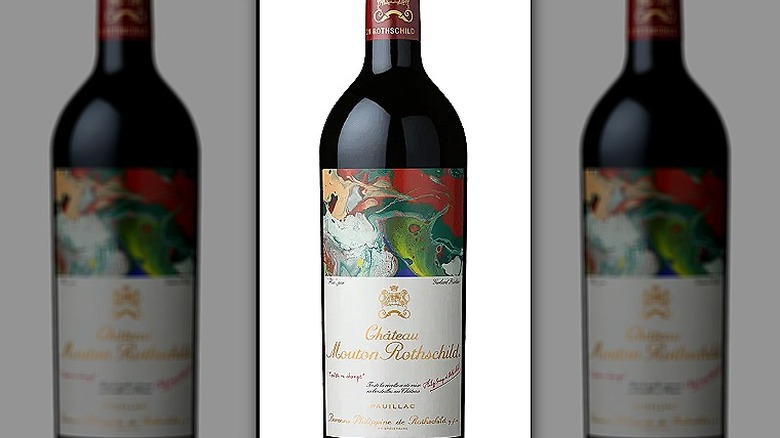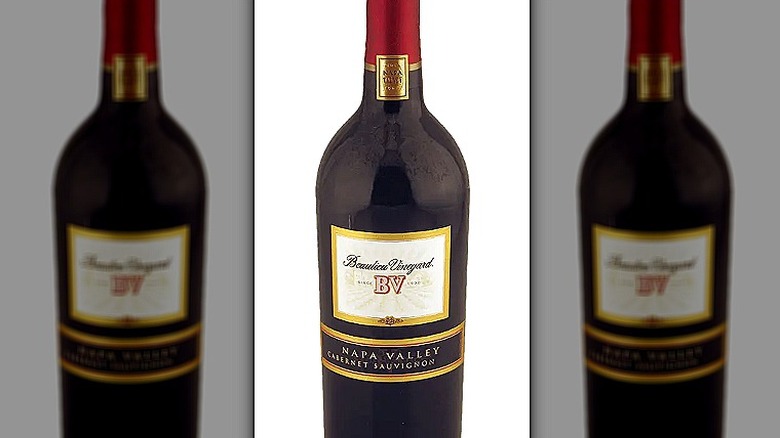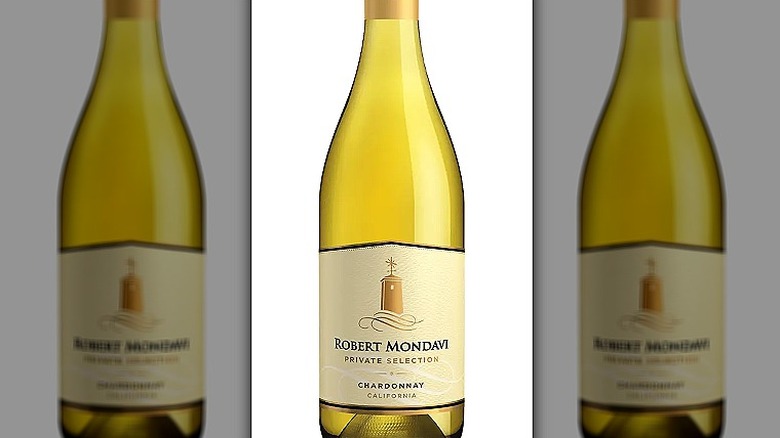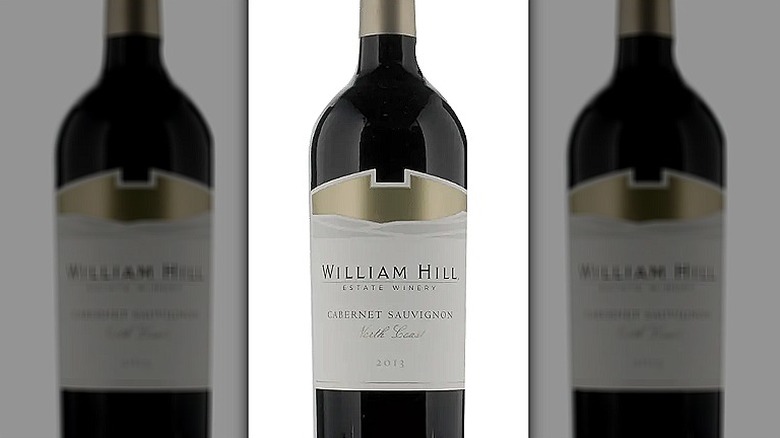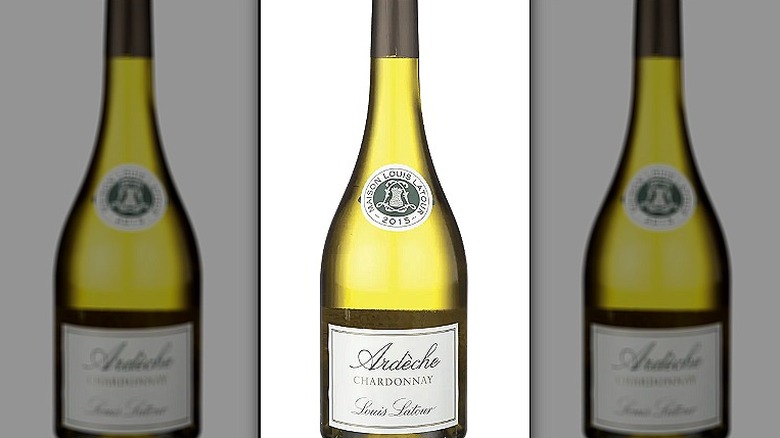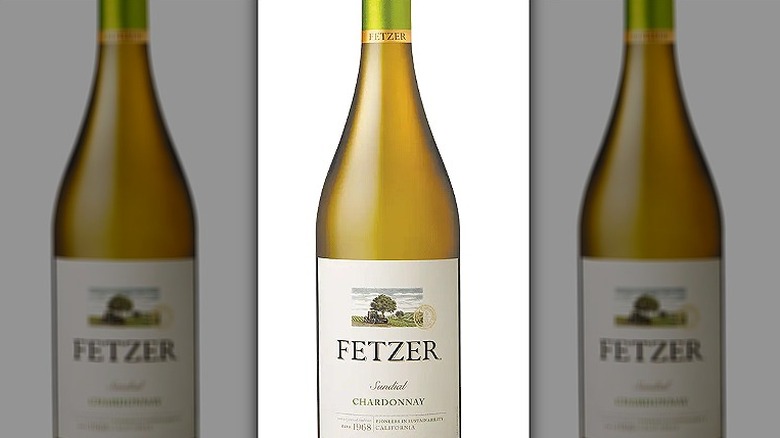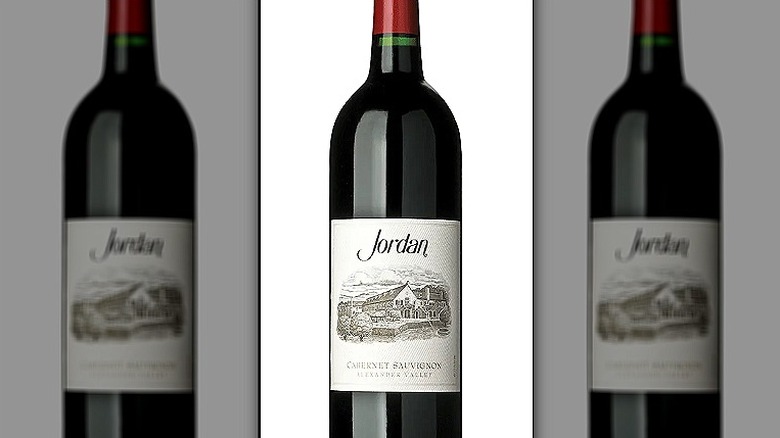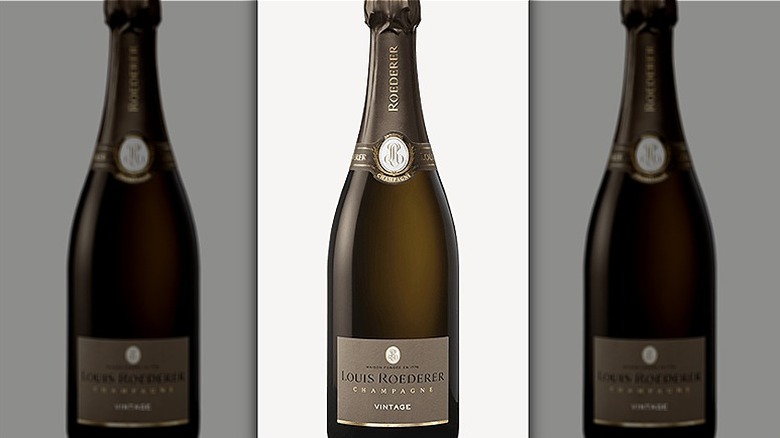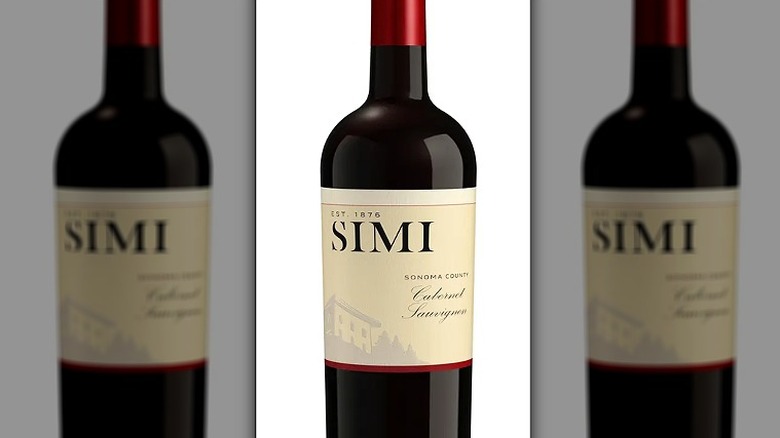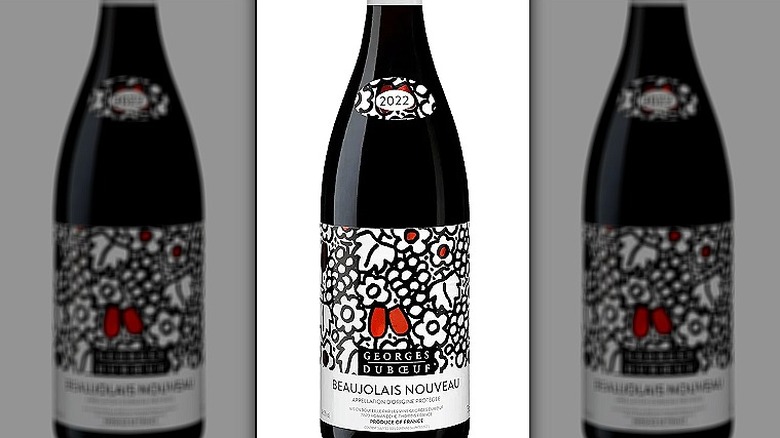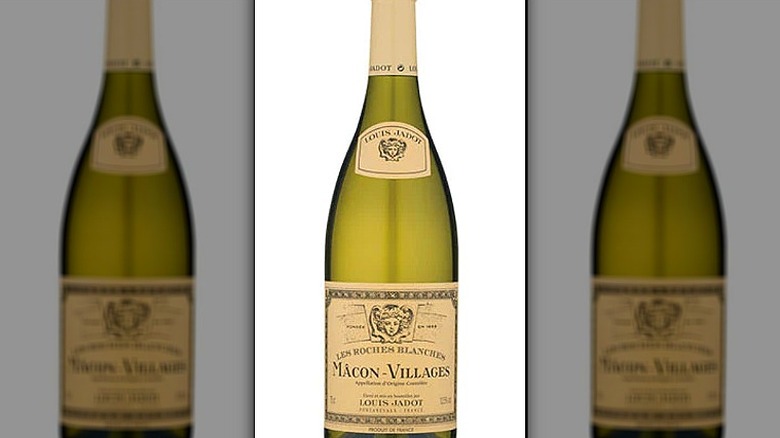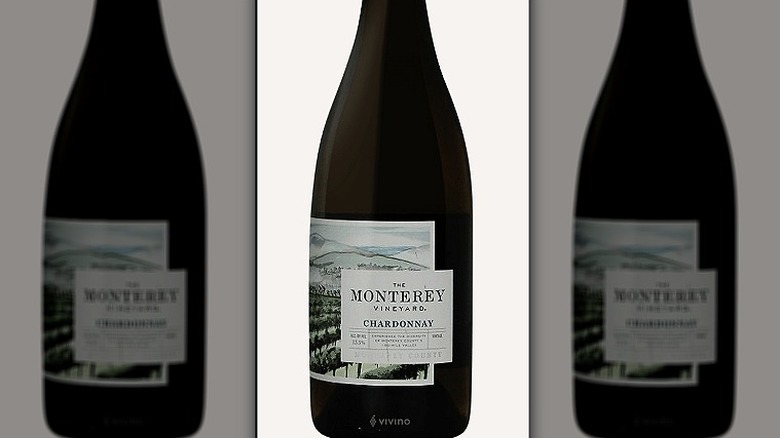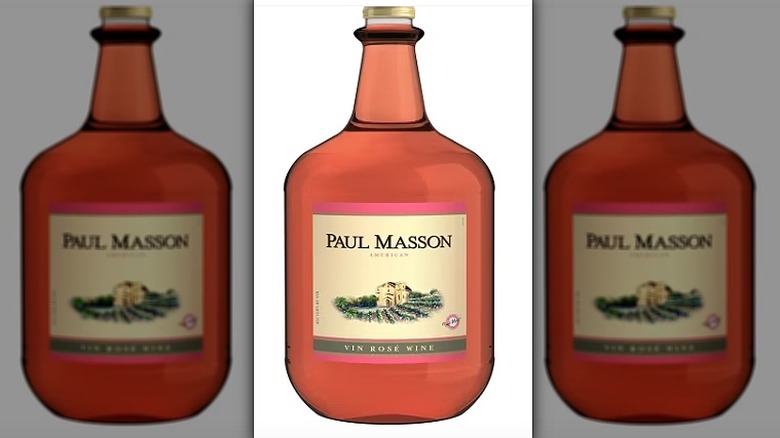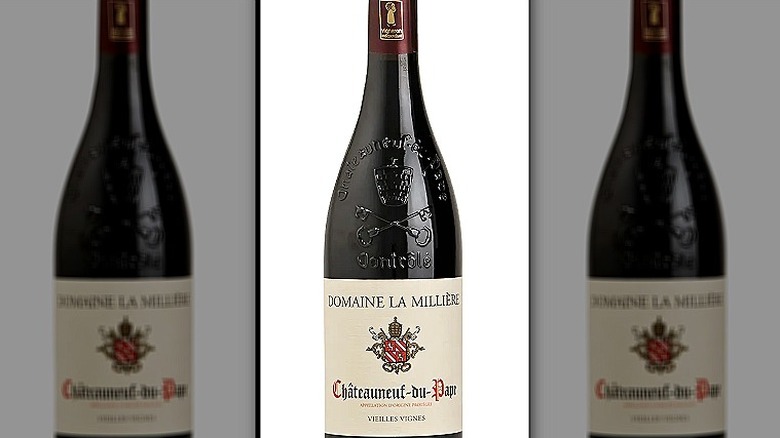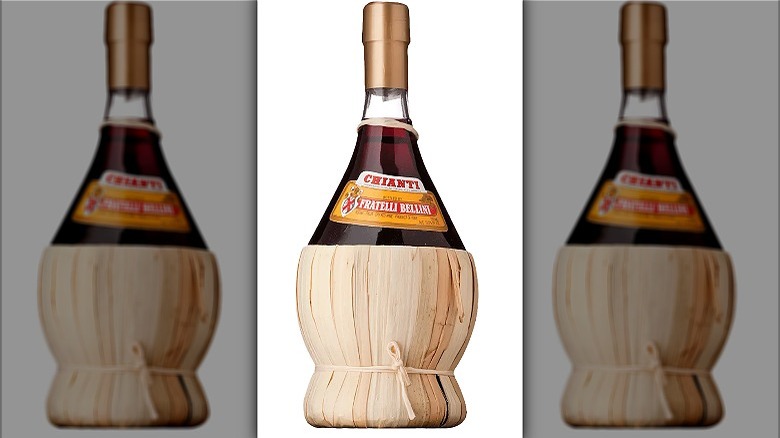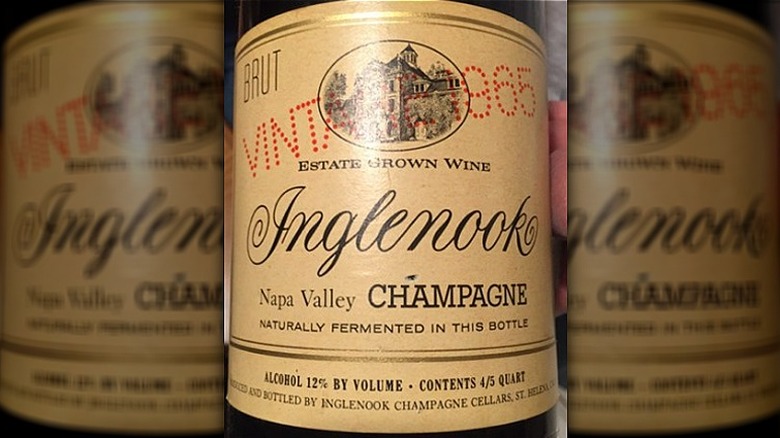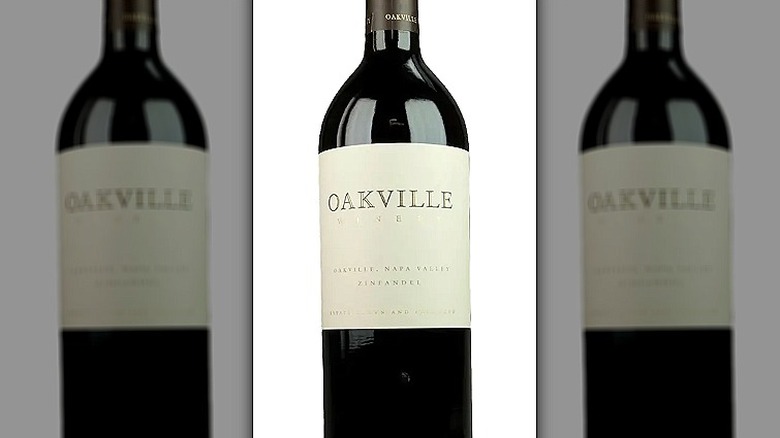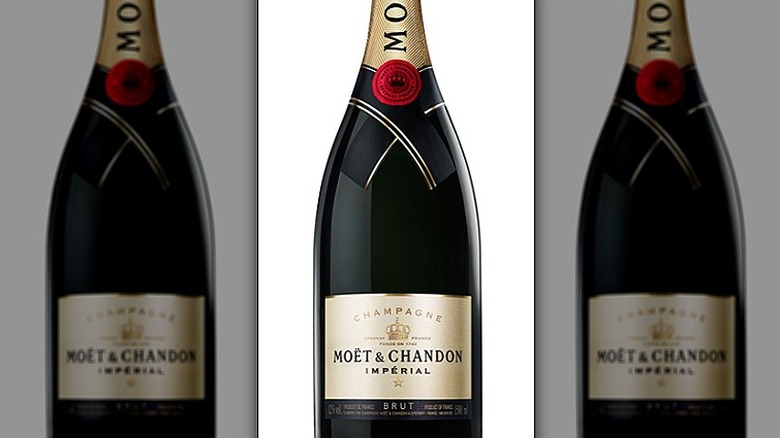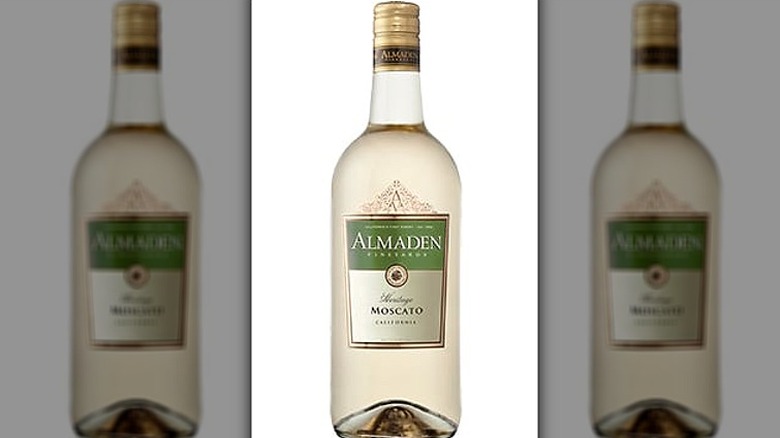How Much A Bottle Of Wine Cost The Year You Were Born
According to the U.S. Bureau of Labor Statistics, the average price of 1 liter of wine appreciated by 334.23% from 1963 to 2023. Meanwhile, mathematician and oenophile Neal D. Hulkower compiled the notes he made about 348 bottles of wine from 1969 to 1979 and found that the average price per bottle was $7.96. Today, 92 of those wines are still available, with the average price now at $577.65 a bottle.
Why the difference? This data indicates something distinctive in wine, making researching its cost in any given year complicated: Wine often gets produced with the intent of cellaring to age before its consumption. Simply googling "how much did a bottle of wine cost in 1980" generally led to results of what that bottle of wine was worth today, not when it was bottled. While we did discover a few archives of prices noted in newspaper grocery ads, most of the pricing we found came from historical restaurant wine menus.
So how much did a bottle of wine cost the year you were born? We're taking a look at wines beginning in 2002 for all of you 21-year-olds and going backward to 1968. For each year where information was available, we provide data about a cross-section of wine varietals, white and red, to give some perspective on what was being consumed and how the tastes of American wine drinkers have changed over the years.
2002
Beginning this countdown with 2002 is ironic for one reason — it is the year that Charles Shaw wines appeared on Trader Joe's store shelves. Gaining the moniker Two Buck Chuck, these wines began retailing at Trader Joe's stores on the west coast of the U.S. for $1.99. While the wine may have gotten the reputation of being inferior, it is anything but. The winery behind the Trader Joe's label, produced by the Bronco Wine Company, kept costs low by sourcing grapes from outside of the famed Napa and Sonoma regions, aging wines using oak chips rather than barrels, and producing wine in bulk using machines over humans. This affordable wine has garnered critical acclaim in addition to consumer popularity, winning double gold in 2002 at the International Eastern Wine Competition with its Shiraz.
2000
Our wines for the year 2000 come from the menu of the Blue Mesa Grill restaurant in Fort Worth, Texas. This restaurant, which still exists today, served food with a Tex-Mex flair. While you might expect it to specialize in top-shelf tequila and margaritas, it boasted a particularly well-stocked wine list that leaned California-heavy particularly. The menu notes that Sauvignon Blanc complements dishes with peppers, Fumé Blanc pairs well with grilled foods, Pinot Noir is great with spicy foods, and grilled pork or beef shines with a Syrah grape. Of the three Fumé Blancs on their menu, the Dry Creek Reserve was their higher-end wine at $29.00 per bottle. The most expensive red wine was the Clos du Bois Pinot Noir, which sold for $30.00 per bottle.
1996
For 1996, we reference the menu at the famous Wolfgang Puck restaurant Postrio in San Francisco, California. Opened in 1989, Postrio was one of the first restaurants helmed by this world-renowned chef. The menu was equal parts quintessentially California fare and continental cuisine, relying heavily upon Asian, French, and Italian influences. The extensive wine list was suitably eclectic, with wines from across the globe. While you could purchase high-end wines that would set you back hundreds of dollars a bottle, the average white wine, represented by the Trefethen Chardonnay from Napa, ran $26.00 a bottle and $6.50 a glass, while the average red wine, represented by the Ravenswood Zinfandel from Napa, ran $28.00 a bottle and $7.00 a glass.
1995
Moving back to 1995, we look at the menu of an Italian restaurant called Spageddies Pass the Ciao. There is no indication of where this restaurant was located, but the menu is relatively typical Italian fare with pizzas, pasta, and the usual main dishes of Chicken Marsala and Eggplant Parmigiana. The wine list is relatively modest, with only a few options on the menu. What is interesting about this particular wine list is that not only were wines available by the glass and the bottle, a few were offered by the 1.5-liter bottle. The Fontana Candida Frascati is a light, white Italian blend that retailed for $4.25 a glass, $14.95 a bottle, and $22.50 for the 1.5-liter bottle. The Mezzacorona Merlot, which is also Italian, retailed for $3.75 a glass, $13.95 a bottle, and $21.00 for the 1.5-liter bottle.
1993
1993 is the first year we have references for wine retailed by a grocery store and wine sold in a restaurant. According to newspaper ads compiled by the Morris County Library in New Jersey, a bottle of André, a sparkling wine made in the champagne tradition in California, retailed for $2.59 per 750-milliliter bottle. The restaurant we found references for was Outback Steakhouse, which sold house wines from E & J Gallo and premium wines. In comparing sparkling wine to sparkling wine, it had a bottle of Veuve du Vernay, a modest sparkling wine from France, for $12.95 a bottle. Evidently, there was a higher markup on retail sales for a restaurant versus a grocery store, which is not uncommon. There is likely also a difference in base cost for domestic versus imported wine, which would explain the discrepancy between the two.
1991
For 1991, we can see the difference between grocery retail versus wine sold during the Stars Bordeaux First Growth Festival in Sacramento, California. The grocery retail from New Jersey is for a 4-liter bottle of Gallo wine. It doesn't specify red or white, but it was $7.99. For reference, a 4-liter bottle of wine is known as a Rehoboam. The wine festival offerings don't have an equivalent-sized bottle of wine. The highest volume bottle sold was a Magnum, which is 1.5 liters. In this case, the bottle of Château Mouton-Rothschild Pauillac vintage from 1978 sold for $300.00. This is a notable example of how wines can appreciate in value over time, making comparing prices from one to another somewhat of an imprecise science.
1990
The Mauna Lani Resort on the Big Island of Hawaii has long been a luxury destination specializing in fine dining and five-star accommodations. Its menu from 1990 represents relatively typical fare, including a catch of the day at market price and an assortment of Pupu platters. Its wine menu is shockingly limited, although adequate. Of the nine wines on the list, six are white wines, one is a sparkling wine, and only two are red, presumably catering to the clientele who typically frequented the resort. The most expensive white wine on the list was the Clos du Val Chardonnay at $29.00 a bottle and $6.00 a glass. The most expensive red wine was the Beaulieu Vineyards Cabernet Sauvignon at $27.00 a bottle and $5.50 a glass.
1989
Our 1989 selection of wines comes from Mike's Marine restaurant in San Pedro, California. The restaurant is no longer functioning, but the seafood grotto boasted a white wine-heavy, all-domestic wine list. White wine with seafood is typical, and a buttery Chardonnay tends to pair well with shellfish, like lobster and scallops. Having three different Chardonnay selections on the menu makes sense. The top-shelf Chardonnay came from Robert Mondavi Winery in Napa Valley and sold for $28.00 a bottle. Its Chardonnay selection was rounded out with a modest Colombia Crest from Washington, retailing at $13.00 a bottle and $3.25 a glass, or a slightly more expensive option from Callaway Vineyards & Winery in Temecula, California, selling at $17.00 a bottle and $4.50 a glass.
1988
Sutter's Mill restaurant in Simi Valley, California, is a classic steakhouse established in 1958. This menu from 1988 reflects a rather well-rounded wine list with domestic and imported wines, as well as a note indicating the restaurant offered a house wine from Inglenook winery in 1 liter, ½ liter, and glass-sized servings. What is perplexing about this list is that it doesn't expressly indicate whether the pricing on the menu reflects by-the-glass or by-the-bottle prices. Based purely on comparison with other restaurants of this era, it is our guess that prices are by the bottle. Stand-out wines include Bethel Heights Chardonnay from Oregon, which garnered critical acclaim in blind tastings in Chicago and New York and sold for $16.95, and the award-winning William Hill Cabernet Sauvignon from Napa Valley, which also sold for $16.95.
1987
For our 1987 selection, we found a menu from a restaurant in Vancouver, Canada. Its name is Earl's, and its menu reflects relatively straightforward, no-frills items. Its wine list, however, is fascinating. It indicates that the staff of Earl's took a trip every year to one of the world's finest wine-producing regions to explore and learn about what the region had to offer. The wine list reflects this with its diversity and attention to detail, including the grape varietal, winery, location, and a description of its primary characteristics. Prices reflected are presumably by the bottle and in Canadian dollars, which means they would cost less in U.S. dollars. Standouts include the Ardeche Latour Chardonnay from France at around $22.00 a bottle and a Drouhin Beaujolais Villages from France at about $19.00 a bottle.
1986
The Rusty Pelican has been a staple in Newport Beach, California, since 1972. The seafood and steak-focused restaurant boasts incredible views of the Pacific Ocean, making it a favorite of many locals. What struck us as notable was how many wines on this list came from the Ernest & Julio Gallo catalog. Not only were the house wines from E & J, but several of the premium selections were too. Back then, the most expensive white wine on its list was the Fetzer Chardonnay at $14.50 a bottle and the Clos du Val Cabernet Sauvignon at $24.50 a bottle. Incredible how much things have changed. Their wine list today boasts several wines retailing for over $100 a bottle, with wines by the glass retailing in the $20.00 a glass range.
1984
Another bit of nostalgia is this nugget from 1984. This menu from the still well-respected Hyatt Regency of Long Beach, California, reflects a seafood-centric classic French-inspired culinary tradition that is no longer typical in Southern California. The wine list is notably divided between California wines and European wines. This list also features several higher-end wines that reflect a more affluent and worldly clientele. Of note is the Jordan Cabernet Sauvignon from the Alexander Valley of California — one of our favorites. Then it retailed for $34.50 a bottle. Today it can easily retail for more than $100.00 a bottle, especially if the vintage is from the early 2000s. This menu also features a spendy Chateau Lafite Rothschild, Pauillac Bordeaux from France, at $138.00 a bottle, which currently retails for $1,194.00 a bottle on average. Yet another stark example of how wine can appreciate in value.
1983
1983 is another year where we were able to find pricing information for both grocery retail as well as restaurant retail for wine. In Morris County, New Jersey, Korbel sparkling wine retailed for $7.99 a bottle, according to newspaper ads. By contrast, the San Francisco Symphony Pops wine menu featured two domestic sparkling wines. Le Domaine retailed for $4.50 for a split, roughly one glass of wine. The Hanns Kornel sparkling wine sold for $32.95 a bottle. Another marked difference between the markup on wine sold by grocery stores versus wine sold by restaurants. The San Francisco Symphony Pops menu also includes a premium French champagne, the Louis Roederer, sold for $69.95 a bottle. This would be considered expensive even by today's standards.
1982
Our 1982 menu comes from a restaurant called Daddy's Money in Clearwater, Florida, which no longer exists. The food menu is abundant. This is one of those typical touristy places with so many different menu items, trying to appeal to so many different tastes it feels overwhelming. Its wine menu, however, is a bit more restrained and streamlined. While it has several wines by the glass, its offerings by the bottle represent a healthy cross-section of both domestic and imported wines. Of note are the Robert Mondavi Chardonnay at $19.00 a bottle and the Simi Cabernet Sauvignon at $15.00 a bottle, which hail from California and are the two priciest options on the menu.
1981
1981 was sparse in information but did have records from Morris County, New Jersey, on newspaper ads for grocery items, which included a bottle of Georges Duboeuf Beaujolais Nouveau for $4.79. For comparison sake, that same year, a bottle of Johnnie Walker Red sold for $7.59 a bottle, and a 24-bottle case of Piels light beer sold for $5.50. The average cost of these items now would be $12.00 for the wine, $26.00 for the whiskey, and somewhere between $15.00 and $25.00 for a 24-pack of beer, depending upon the brand and location purchased. That's about a 150% increase for the wine, about a 240% increase for the whiskey, and between a 170% increase and a 354% increase for the beer.
1980
The Pelican's Catch seafood restaurant in Venice Beach, California, had a great selection of fresh seafood in 1980. Its wine list was affordable and serviceable. We noted the ability to order house wine by the carafe for $4.95, ½ carafe for $2.95, and a glass for $1.00, although we aren't clear where this wine came from. Its premium wines included a Beaulieu Vineyards Estate Bottled Chardonnay for $13.50 a bottle and French Macon Blanc for $11.00. For reference, Estate Bottled means the wine must be produced and bottled at the winery using grapes cultivated by the producer within the same geographic jurisdiction as the winery. Macon Blanc is a wine from Macon, France, made from chardonnay grapes. Unless a page is missing from the menu, this restaurant only served white and sparkling wines and no red wines.
1978
The 1978 menu from the Shaker Mountain Inn in Glendale, California, offers standard steakhouse fare. Its wine list is of interest from a consumer education perspective. It notes that the menu is designed to describe the aroma and taste of wine, including color, bouquet, flavor, and texture. This is intended to provide sensory images helping the diner determine the most appetizing marriage between what they eat and the wine they drink. The descriptions are appropriately evocative, something we wish more menus did all the time. Of note is the Chardonnay from The Monterey Vineyard in California at $7.75 a bottle, which is described as being citrusy and complex with churned butter overtones, as well as the Cabernet Sauvignon from Sterling Vineyards of Napa at $8.50 a bottle, with a cedar aroma and ripe currant flavors.
1977
This 1977 wine list from The Terrace Club in Minnesota has some fascinating characteristics. First, it notes pricing for large bottles and small bottles. We can only surmise that this means the difference between a standard 750-milliliter bottle versus a half bottle, which is 375 milliliters, but we cannot be sure. The second thing of interest on this list is that most of the wines came from Paul Masson, a Frenchman who established a winery in California in 1878. While Masson was initially known for making affordable, respectable wines, he eventually branched out into making brandy which became his signature beverage. The most expensive wines on this list are sparkling varieties at $7.50 for a large bottle. The remaining wines run between $3.50 and $4.50 for a large bottle and $1.95 to $2.50 for a small bottle.
1975
One might assume that if there were a slightly more high-end wine list in 1975, it would come from the Playboy Club in Detroit, Michigan. While there are some affordable house wines by the full 1 liter, ½ liter, and glass, most of the premium wines on this list were only available by the bottle. The menu had a well-curated offering of whites and reds, both domestic and imported. The descriptions of a half bottle that serves two versus a full bottle that serves four tickled us. We also found it fascinating that they included a guide for which wines someone might enjoy if they usually drink gin, like soft and delicate wines, bourbon for medium dry wines, or scotch for very dry wines. The most expensive red was the Châteauneuf-du-Pape at $10.00 a bottle. The spendiest white was the Pouilly Fuisse at $10.00 per bottle or $5.50 a half bottle.
1974
This 1974 menu from the famed Mamma Leone's Italian restaurant in New York City was a find. Listed as one of the iconic restaurants that first put Italian food on the map in 1906, it was at one point the largest in the city, serving on average 700,000 diners annually in its expansive 11 dining rooms until it closed in 1994. Classic Italian fare required a wine list featuring Italian wines. While this menu had expanded to include a few French, German, American, and Portuguese selections, bold Italian reds were the stars of the wine list. Wines were listed by grape varietal rather than by winery, suggesting the degree to which American diners were somewhat naive about wine. One could get a Barolo, Chianti, Valpolicella, Verdicchio, or Orvieto for $7.75 per bottle or $4.50 for a half bottle. Cost being the same, all that mattered was individual taste.
1973
1973 allows us to compare grocery retail against restaurant retail with advertising information from Morris County, New Jersey, and a wine menu from The Black Whale Inn restaurant in Twin Falls, Idaho. The grocery ad listing was for a fifth-size bottle of California Champagne at $1.89. For reference, a fifth-size bottle is a standard 750-milliliter bottle of wine. The winery of origin is not indicated. The wine list denotes that all the wines offered are from Inglenook Estate winery of Napa Valley. The most expensive wine on the list is the Brut Champagne at $7.75 per bottle, $4.50 a half bottle, and $1.75 for a split. That's about a 120% difference between grocery versus restaurant-bought sparkling wine. Also, we'd like to note that a wine cannot be called champagne unless it originates in the Champagne region of France, which means neither listing is actually champagne.
1972
The 1972 menu is from the historic Nut Tree Restaurant, an early proponent of California cuisine in Vacaville, California. This expansive and eclectic menu highlighted abundant locally grown fruits and vegetables. What is distinct about this menu is its wine focus. Every dish listed has an accompanying wine suggestion, like the Nut Tree Tamale Plate is paired with the Oakville Zinfandel, and the Fresh Broiled Salmon is paired with the Beaulieu Riesling. The Oakville Red Zinfandel is listed as a California-type wine that is fruity, zestful, aromatic and has a berry flavor, costing $4.50 per glass. The Beaulieu Riesling is advertised as straw color, dry, and fruity, costing $4.25 per glass. The menu also offered a daily red and white stoneware cruet for $1.50. A cruet is a container with a broad, level bottom, and a tapered neck, topped with a cork stopper historically associated with ritual religious ceremonies.
1970
The 1970 wine menu from the Hungry Voyager restaurant in Denver, Colorado, had a couple of notable elements on the menu. First, they label the Rosé as pink, making us wonder if consumers understood that wine gets its color from fermenting along with the grape skins for extended periods. Second, while each section of white, pink, red, and sparkling has general guidelines indicating what types of food they pair best with, there is a note at the bottom of the menu suggesting that regardless of what rules may dictate, you should drink what you like. The most expensive wine on the list is the Moët Extra Dry champagne from France at $9.25 a bottle or $5.25 a half bottle. The cheapest wines came from Taylor Wine Company of the Finger Lakes, New York. Their Burgundy, Rosé, and Sauterne were $3.00 per bottle or $1.75 a half bottle.
1968
The 1968 wine list from the Carriage House restaurant in Walnut Creek, California, stands out immediately for being dominated by wines from two wine purveyors — Paul Masson and Almaden, some of the first wines produced in California. Yet again, the rosé wines are called Pink. We also noted a Champagne Cocktail for Two on the menu for $1.50 a split advertised as A Toast to Pleasure. This wine list is incredibly affordable, with wines ranging from $2.75 to $3.00 a bottle and $1.50 to $1.75 a half bottle. The sparkling wines were roughly double that at $6.00 a bottle and $3.00 a half bottle. Anecdotally, while you may still pay a pretty price for a true champagne from France today, like a Veuve Clicquot, sparkling wines are far more in line with the pricing of other wines on restaurant menus, reflecting savvier consumers.
